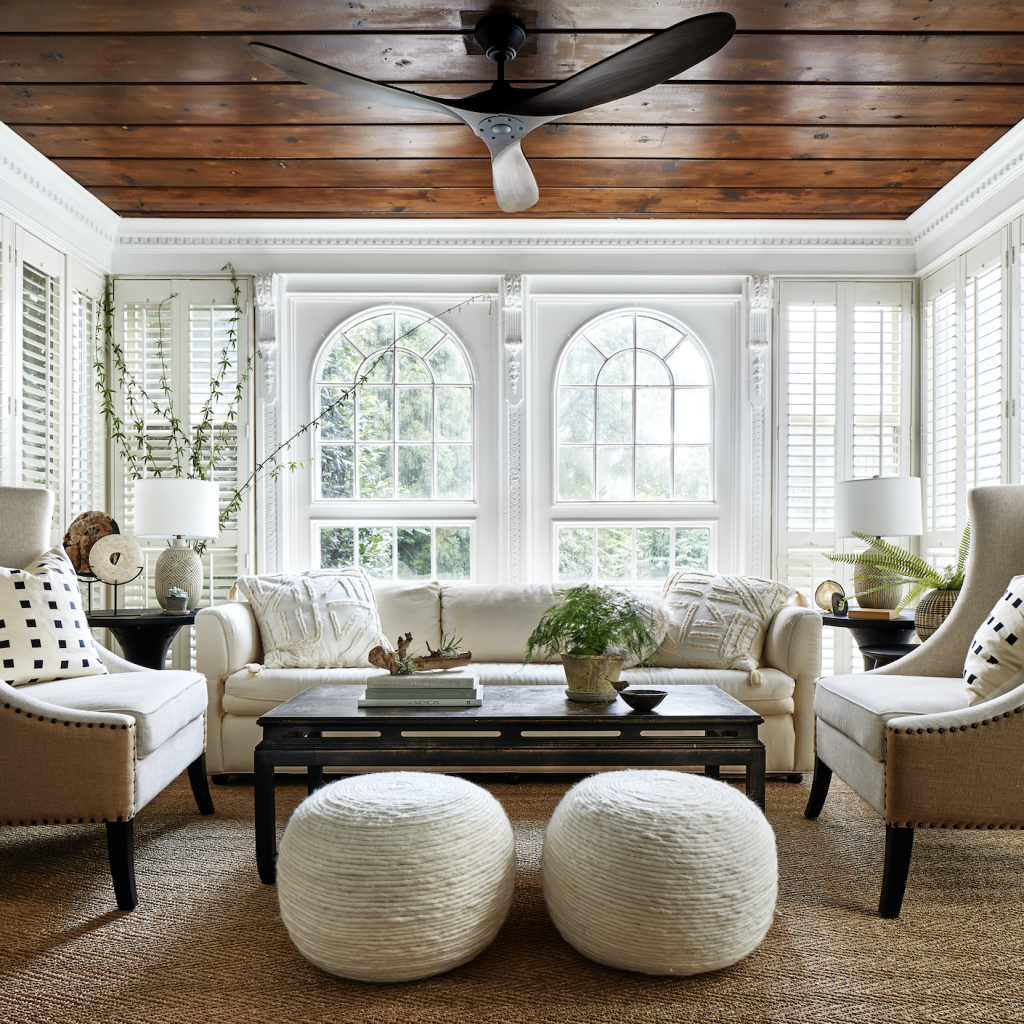Ceiling fans are a common installation in many homes across America, and people like to put a lot of ideas and artistry into their ceiling fans’ designs. This involves picking them based on shapes, sizes, designs, and even material. Some are pure ceiling fans, while others also include a light kit as well. Today, we are going to look at some different types of ceiling fans to choose from.
Standard

If you have seen a ceiling fan in your life, there are good odds that you have seen one of these. This is the standard, the typical, the common. However, that should not be meant to say that they’re bad — far from it. After all, something that is as common as this is common for a good reason. These kinds of fans are quite adaptable, having a variety of styles that fit in well with just about any aesthetic you are gunning for. Standard fans use downrods, which can be adjusted to different heights when installed to ensure proper clearance for people navigating the room.
Low-Profile
These kinds of fans are meant to be used in rooms where the height clearance is quite low. They are best employed when the ceiling height is eight foot or less. If you use a standard fan in a room like this, you might find that some people get whacked on the noggin from how low the fan reaches. Low-profile fans use a mounting bracket instead of a downrod, ensuring that it is hanging higher off the ground.
Environmentally conscious
As time passes, we are seeing more negative impact caused to the environment by excess power consumption, among other things. In order to try to reduce the carbon impact, manufacturers have begun pushing environmentally conscious low-energy fans. For instance, the Environmental Protection Agency created the Energy Star standard for energy consumption (20-30% less energy consumption than the federal requirement). Standard ceiling fans can be Energy Star-compliant, but one style involves design changes to do what a standard fan does more efficiently.
Dual-Motor

These fans are not quite so common compared to standard ceiling fans, but they are still pretty great. The best part of these fans is that they allow you to regulate the temperature in a room more easily, thanks to the fact that one of the motors can make one part of the room feel cooler than the other part. Some dual-motor ceiling fans also have light systems, which means that you would also be able to light different parts of the room differently (both in terms of brightness and light color, depending on the kinds of lights being used).
Bluetooth-enabled
This is arguably the best new technological evolution with ceiling fans, and it is one of our favorites. Bluetooth-enabled smart ceiling fans can connect with a variety of different Bluetooth devices, most notably Bluetooth remotes and smart devices like Google Home and Amazon Echo. You can use these devices to start and stop the fan (with either buttons or voice controls), and if it has a light fixture and the feature, you can even turn on and off the light, and possibly change the colors of the light. There is nothing better than putting on the right song and having your ceiling fan’s lights change to match the right mood. Again, this ultimately depends on the kind of lights installed.
Outdoor
Outdoor ceiling fans are noted for a relatively higher degree of vulnerability, simply by virtue of the fact that they need to be since they are more exposed to the elements than typical ceiling fans. If you think you can put a standard ceiling fan in an outdoor area like a patio, think again: such a thing may be dangerous to the fan, or worse, you. This is because they are approved for use in dry areas, and a patio is liable to experience humidity and moisture. Outdoor ceiling fans are graded to be able to deal with damp conditions, although you should not expose it to water directly, as that is likely to cause some damage to the fan. Be sure to only use this kind of fan if you can ensure that the fan will not fall victim to the rain.
Antique

Antique ceiling fans are less of a kind of ceiling fan and more of a certain taste. After all, most antique ceiling fans you will find are ones that are actually authentically antique. If you want to go for a true, authentic antique ceiling fan, expect to pay a decent sum to get something good. However, there is also something to be said about making sure it matches the aesthetic of the room it’s in. After all, if it is the only antique item in the room, it is going to stick out like a sore thumb. Unfortunately, buying a bunch of antique items to make your chandelier ceiling fan match the room is not going to be a cheap process by any stretch of the imagination.
Thanks to hunterfan.com for consulting.
























